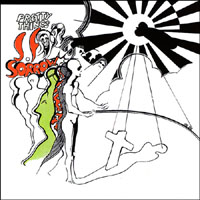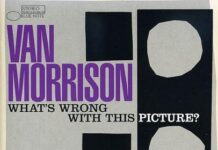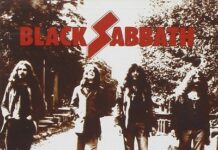The Pretty Things usually take a backseat to such frontliners as the Rolling Stones, the Who and the Kinks. Funny thing is guitarist Dick Taylor was in the Stones during their initial structuring. But Taylor and vocalist Phil May took it one step further, and went on to put together the nastiest band in England. Attaining moderate success, the quirky R & B unit rode out the tide, and latched onto the psychedelic scene with the album Emotions, an effort that apparently purged the creative juices. The stage was set for May’s tale of Sebastian F. Sorrow, whose beleaguered life is mired in tragedy and misfortune. The resulting S.F. Sorrow is considered the first bona fide rock opera — its release predating both Tommy and Jesus Christ Superstar. And although it would never achieve the mass popularity of its successors, it is nevertheless an engaging and powerful piece of music that has aged with grace and dignity.
Released in 1968, S.F. Sorrow certainly had all the makings of a great album. It was recorded at Abbey Road and produced by Norman Smith, the Beatles’ first engineer and Pink Floyd’s first producer. Smith had been instrumental in fleshing out Syd Barrett’s psychedelic meanderings on Pink Floyd’s first album, The Piper At The Gates Of Dawn, and he infused much of the same Carnaby Street flavor into the production of his first record with the Pretty Things – the 1967 single, “Defecting Grey”/”Mr. Evasion” (these plus the follow-up single “Talkin’ About The Good Times”/”Walking Through My Dreams” all appear as bonus tracks on the S.F. Sorrow CD). Within the realm of a truly acid-inspired concept, Smith extended the arrangements, and simultaneously gave the album a familiar, yet not-of-this-earth vibe. “S.F. Sorrow Is Born” starts off like a Kinks number and slowly descends into Stones territory before spiraling off on its own. “Bracelets Of Fingers” inflates like a vintage Beatles harmony before it transforms into a kaleidoscope of Pet Sounds proportions. From “Balloon Burning” to “Baron Saturday” right through to the closing “Loneliest Person,” S.F. Sorrow weaves a tapestry of hues, highs and lows — a seminal psychedelic feast.
Unfortunately, S.F. Sorrow never caught on with the mainstream. The Pretty Things still hadn’t invaded America and were banned from countries like New Zealand for their unruly conduct. Taylor jumped ship soon after, and although their next album, Parachute, would go on to become Rolling Stone’s Album of the Year, success eluded the band. Still, they carried on, albeit less frequently — the luster diminished and legend somewhat obscured. Then in 1998, the S.F. Sorrow line-up reunited and performed the entire piece live at Abbey Road Studios. The event featured Pink Floyd’s David Gilmour and was narrated by the legendary Arthur Brown. Broadcasted over the Internet, a CD o f the performance entitled Resurrection was released. Which begs the question: What’s next my Pretties?
~ Shawn Perry




















